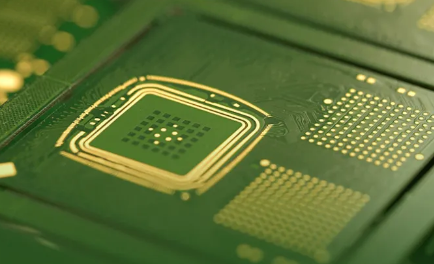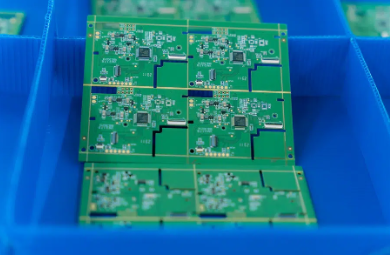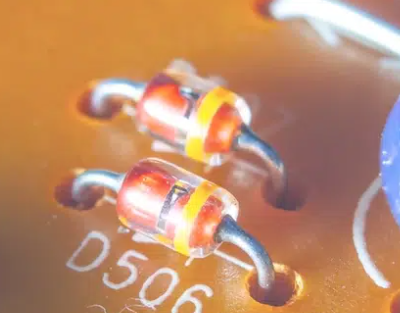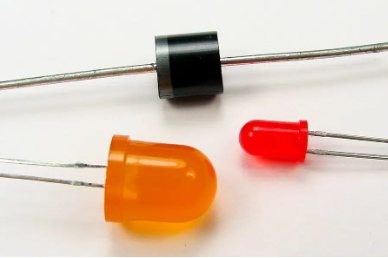What is the difference between the package substrate and PCB
The packaging substrate is a kind of electronic substrates that can provide electrical connection, protection, support, heat dissipation, assembly and other functions for chips and electronic components, so as to achieve multi-pin, reduce the volume of packaged products, improve electrical performance and heat dissipation, ultra-high density or multi-chip modularization and high reliability.

The packaging substrate can be considered as a PCB or thin-thick film circuit substrate with higher performance or special functions. The packaging substrate plays the role of electrical interconnection and transition between the chip and the conventional printed circuit board (mostly motherboard, sub-board, backplane, etc.), and also provides protection, support, heat dissipation, assembly and other functions for the chip.
With the continuous progress and development of electronic installation technology, the boundaries of various levels of electronic installation are becoming less and less clear. The role of PCB is becoming more and more important. Higher and newer requirements are put forward for PCB and its substrate materials in terms of function and performance.
Difference between package substrate and PCB
Printed Circuit Board (PCB) refers to a circuit board that forms a copper circuit pattern on a copper clad laminate according to a predetermined design. Its main function is to connect various electronic components according to a predetermined circuit and act as an electrical connection.
The packaging substrate and PCB manufacturing principles are similar. It is the extension of PCB to high-end technology to adapt to the rapid development of electronic packaging technology. There is a certain correlation between the two. The packaging substrate is a high-end PCB.
package substrate
In electronic packaging engineering, the electronic substrate (PCB) can be used for different levels of electronic packaging (mainly used for the 2nd to 5th levels of the 1st to 3rd level packaging), but the packaging substrate is used for the 2nd and 3rd levels of the 1st and 2nd level packaging, Ordinary PCBs are used for levels 3, 4, and 5 of level 2 and level 3 packages.
However, they all provide functions such as interconnection, protection, support, heat dissipation, and assembly for electronic components to achieve multi-pin, reduce the volume of packaged products, improve electrical performance and heat dissipation, ultra-high density or multi-chip modularization, and high reliability for the purpose.
The process and reasons for the separation of the package substrate from the PCB
After the 1980s, with the wide application of new materials and new equipment, integrated circuit design and manufacturing technology developed rapidly in accordance with “Moore’s Law”, tiny and sensitive semiconductor components came out, large-scale integrated circuits and ultra-large-scale integrated circuits appeared, and high-density multilayer packaging substrates emerged as the times require, which separates integrated circuit packaging substrates from ordinary printed circuit boards. A proprietary manufacturing technology for integrated circuit packaging substrates then formed.
At present, among the mainstream products of conventional PCB boards, products with a line width/line spacing of 50μm/50μm belong to high-end PCB products. However, this technology still cannot meet the technical requirements of the current mainstream chip packaging. In the field of packaging substrate manufacturing, products with a line width/line spacing of 25μm/25μm have become more common, which reflects that packaging substrate manufacturing is more advanced in technology than conventional PCB manufacturing.
There are two fundamental reasons for the separation of packaging substrates from conventional printed circuit boards: on the one hand, because the development speed of PCB boards is lower than that of chips, it is difficult to directly connect chips and PCB boards. On the other hand, the cost of the PCB board refinement is much higher than the cost of interconnecting the PCB and the chip through the packaging substrate.
Main structure and production technology of package substrate
At present, there is no unified classification standard in the packaging substrate industry. Packaging substrate is usually classified according to the substrate material and manufacturing technology applicable to substrate manufacturing.
According to different substrate materials, packaging substrates can be divided into inorganic packaging substrates and organic packaging substrates. Inorganic packaging substrates mainly include: ceramic-based packaging substrates and glass-based packaging substrates. Organic packaging substrates mainly include: phenolic packaging substrates, polyester packaging substrates, and epoxy resin packaging substrates.
Organic Package Substrate
According to the different manufacturing methods of the packaging substrate, the packaging substrate can be divided into a core packaging substrate and a new coreless packaging substrate.
Core and coreless packaging substrates
The core package substrate is mainly divided into two parts in structure, the middle part is the core board, and the upper and lower parts are laminated boards. The production technology of the core packaging substrate is based on the high-density interconnection (HDI) printed circuit board production technology and its improved technology.
Core and coreless packaging substrates
A coreless substrate refers to a packaging substrate with a core board removed. The fabrication of the new coreless package substrate mainly produces interlayer conductive structures—copper pillars—by bottom-up electrodeposition technology. It only uses an insulating layer (Build-up Layer) and a copper layer to achieve high-density wiring through a semi-additive (SemiAdditive Process, abbreviated as SAP) build-up process.
Advantages and disadvantages of coreless packaging substrates
Advantages
Thinning;
The electrical transmission path is reduced, the AC impedance is further reduced, and its signal line effectively avoids the return loss generated by the PTH (copper plated through hole) on the traditional core substrate, which reduces the inductance of the power system loop and improves the transmission. characteristics, especially frequency characteristics;
The direct transmission of signals can be realized, because all circuit layers can be used as signal layers, which can improve the freedom of wiring, realize high-density wiring, and reduce the limitation of C4 layout;
Except for some processes, the original production equipment can be used, and the process steps are reduced.
Disadvantages
Without core board as support, it is easy to warp and deform in the manufacture of coreless substrates, which is the most common and biggest problem at present;
Laminate shattering is prone to occur;
Some new equipment for coreless substrates for semiconductor packaging needs to be introduced. Therefore, the challenges of coreless substrates for semiconductor packaging mainly lie in materials and processes.
在线留言询价

What is “component placement” in PCB?

15 Common PCB Circuit Effects
- 一周热料
- 紧缺物料秒杀
| 型号 | 品牌 | 询价 |
|---|---|---|
| MC33074DR2G | onsemi | |
| BD71847AMWV-E2 | ROHM Semiconductor | |
| CDZVT2R20B | ROHM Semiconductor | |
| RB751G-40T2R | ROHM Semiconductor | |
| TL431ACLPR | Texas Instruments |
| 型号 | 品牌 | 抢购 |
|---|---|---|
| TPS63050YFFR | Texas Instruments | |
| BU33JA2MNVX-CTL | ROHM Semiconductor | |
| ESR03EZPJ151 | ROHM Semiconductor | |
| IPZ40N04S5L4R8ATMA1 | Infineon Technologies | |
| BP3621 | ROHM Semiconductor | |
| STM32F429IGT6 | STMicroelectronics |
- 周排行榜
- 月排行榜
AMEYA360公众号二维码
识别二维码,即可关注


请输入下方图片中的验证码:
























